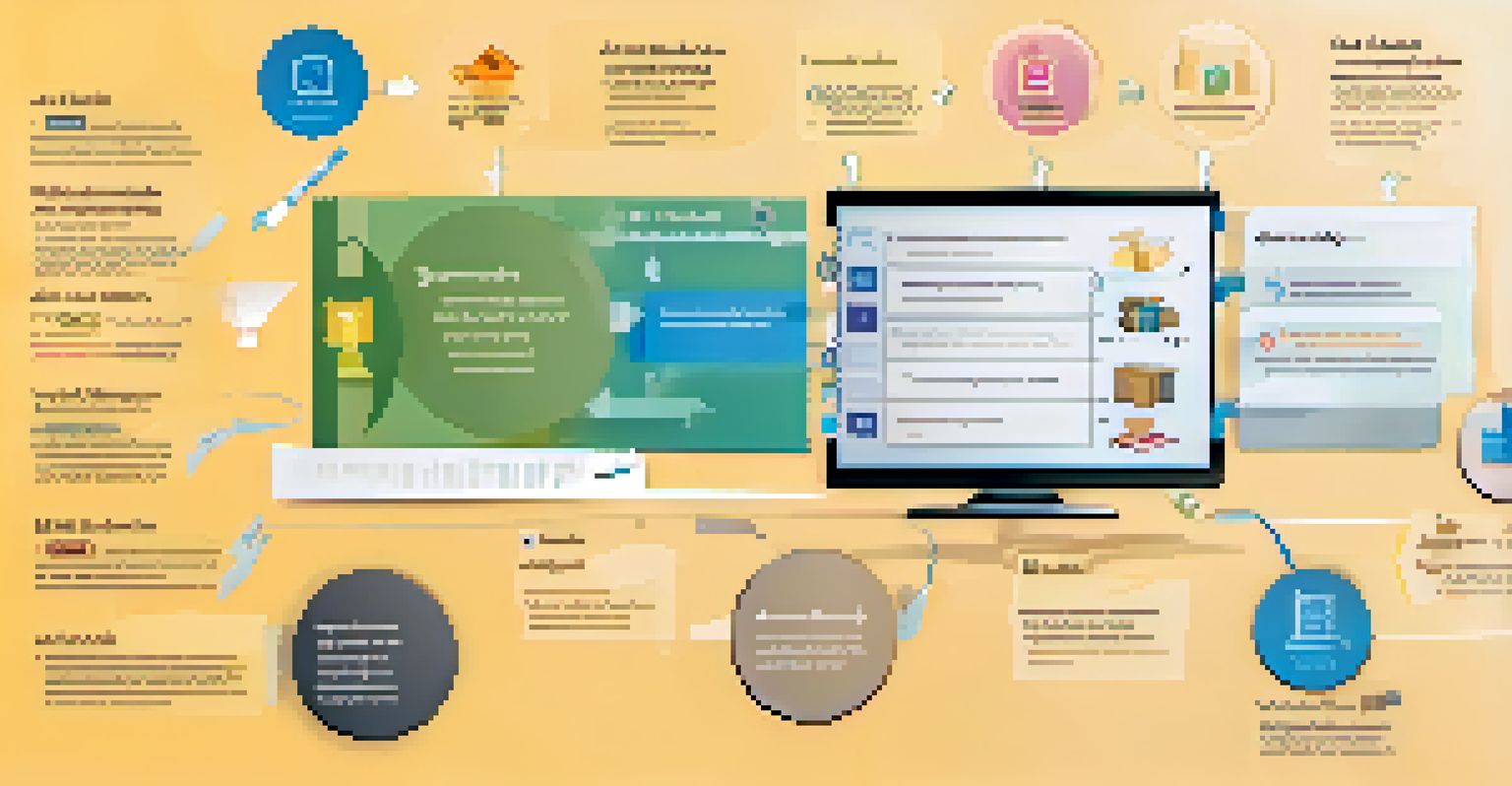Creating Interactive Quizzes for Online Learning

Understanding the Importance of Interactive Quizzes
Interactive quizzes serve as a bridge between passive learning and active engagement. They allow learners to test their knowledge in real time, providing immediate feedback that solidifies understanding. This engagement is crucial, especially in an online environment where distractions are plentiful.
The greatest gift is not being afraid to question.
By incorporating quizzes, educators can transform a standard lesson into an interactive experience, making learning more memorable. Think of it as a friendly competition where students can gauge their understanding alongside their peers. This not only builds confidence but encourages a collaborative learning atmosphere.
Moreover, quizzes can help identify knowledge gaps, allowing educators to tailor their teaching strategies. For instance, if a significant number of students struggle with a particular concept, it signals the need for further clarification. This responsive approach enhances the overall effectiveness of online learning.
Choosing the Right Quiz Format for Your Audience
Not all quizzes are created equal, and the format you choose can significantly impact engagement levels. Whether it’s multiple-choice, true/false, or short answer, each format has its own strengths. For example, multiple-choice quizzes are great for quick assessments, while open-ended questions encourage deeper thinking.

Consider your audience’s learning preferences when selecting a quiz format. Younger learners might enjoy gamified quizzes or interactive tools that incorporate visuals and sounds. On the other hand, adult learners may prefer straightforward assessments that allow for quick feedback and minimal distractions.
Engage Learners with Quizzes
Interactive quizzes enhance student engagement by providing real-time feedback and identifying knowledge gaps.
Ultimately, the goal is to create a quiz that resonates with your audience. Experiment with different formats and solicit feedback to find what works best. This not only enhances learning outcomes but also fosters a sense of ownership in the learning process.
Incorporating Multimedia Elements for Engagement
Multimedia elements can significantly enhance the effectiveness of interactive quizzes. Incorporating images, videos, and audio can make quizzes visually appealing and engaging. For instance, a video clip followed by a related question can deepen understanding and retention of the material.
Learning is a treasure that will follow its owner everywhere.
Think of a quiz as a story; multimedia elements are the illustrations that bring it to life. When learners can see and hear the content, they are more likely to remain engaged and invested in the material. This multisensory approach can cater to different learning styles, making it more inclusive.
However, it’s essential to strike the right balance. Too much multimedia can be overwhelming and distract from the quiz’s purpose. Aim for a harmonious blend that enhances learning while keeping the focus on the content.
Crafting Clear and Concise Questions
The clarity of your questions can make or break an interactive quiz. Questions should be straightforward and free from ambiguity to ensure learners understand what’s being asked. For example, instead of asking, 'What’s the importance of this concept?', you might ask, 'List two benefits of this concept.'
Additionally, consider the language you use. Avoid jargon or overly complex terms unless necessary, and always provide explanations when using them. Remember, the goal is to assess knowledge, not confuse learners with tricky wording.
Choose Formats for Audience
Selecting the right quiz format based on your audience's preferences can significantly boost participation and learning outcomes.
Finally, mix up the difficulty levels of your questions. A blend of easy, moderate, and challenging questions can keep learners engaged and motivated. This way, they feel a sense of accomplishment while also being challenged to think critically.
Utilizing Feedback to Enhance Learning Experiences
Feedback is an integral part of the learning process, and interactive quizzes provide an excellent opportunity for this. After completing a quiz, learners should receive immediate feedback on their answers, explaining why certain options are correct or incorrect. This helps reinforce learning and clarifies misunderstandings.
Consider providing personalized feedback for a more tailored experience. For instance, if a student consistently struggles with a particular type of question, offer additional resources or tips. This shows that you care about their progress and fosters a growth mindset.
Additionally, encourage self-reflection by prompting learners to think about their answers. Questions like, 'Why do you think this answer is correct?' can deepen their understanding and encourage critical thinking.
Gamifying Quizzes for Increased Motivation
Gamification can transform a standard quiz into an exciting challenge. By incorporating elements like points, badges, and leaderboards, you can motivate learners to engage more fully with the content. For example, giving points for correct answers or for completing quizzes within a certain time frame can foster a healthy competitive spirit.
Think of it as turning learning into a game where everyone can have fun while they learn. This approach not only boosts engagement but also encourages learners to revisit the material to improve their scores. It’s a win-win situation!
Use Feedback to Improve Learning
Immediate and personalized feedback from quizzes reinforces understanding and fosters a growth mindset among learners.
However, ensure that the gamification elements don’t overshadow the learning objectives. The primary goal should always be knowledge acquisition, with game elements serving to enhance, not detract from, that goal.
Analyzing Results to Improve Future Quizzes
Once your quiz is complete, the work doesn’t stop there. Analyzing the results can provide valuable insights into both learner performance and the quiz’s effectiveness. Look for patterns, such as common wrong answers, to identify areas that may need further instruction.
This data-driven approach allows you to refine your quizzes continuously. For instance, if a specific question consistently confuses students, it may need rewording or rethinking altogether. By being responsive to learner needs, you can enhance the overall quality of your quizzes.

Moreover, sharing results with students can promote transparency and foster a culture of improvement. When learners understand where they excel and where they can grow, they become more invested in their educational journey.